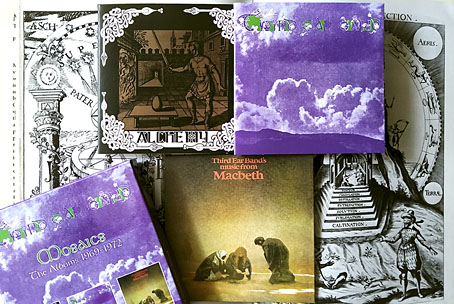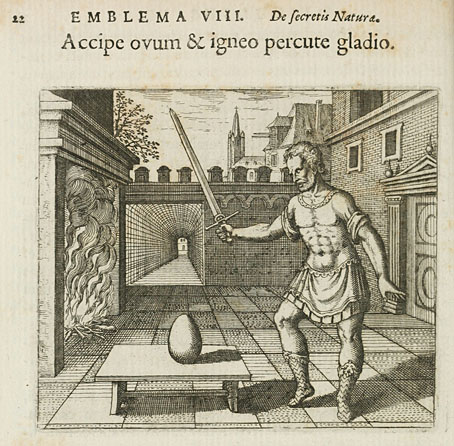Cherry Red Records this month reissues the first three albums by the unique and wonderful Third Ear Band. I like CDs, and I especially like having them collected into boxes with Japanese-style facsimile sleeves, so this collection is irresistible. The group’s first two albums, Alchemy (1969) and Third Ear Band (1970), still sound timeless despite being products of their time, with the track you’d most expect to sound dated, Ghetto Raga, being free of sitars or Indian pastiche. Third Ear Band music is a kind of improvised folk, predominantly the product of oboe, violin and percussion, which sounds like something the group might have tuned into when they were playing for Druids at ancient sites (Stone Circle and Druid One are further track titles). The first two albums also have the additional attraction for this listener of a heavy emphasis on medieval mysticism, from the Atalanta Fugiens illustration by Matthäus Merian on the cover of Alchemy, and the symbols and astrological diagrams that fill out the inside cover of the second album, to the titles of that album which continue the alchemical theme: Air, Earth, Fire and Water. The group also borrowed some graphics from Aubrey Beardsley when they issued their musical manifesto in 1969.
Music From Macbeth (1972) is constrained in comparison to the albums that precede it, being subservient to Roman Polanski’s feature film, although there’s more music here than was used in the film. It’s also closer to rock music in places, with occasional fuzzed guitar, a Mellotron, and rumbles from a VCS 3 synthesizer played by a future member of Hawkwind, Simon House. The cover painting by Roger Dean isn’t one of his best. In Views Dean complains that Polanski “got the imagery wrong” for the scenes with the witches, a comment I’ve never understood. Polanski’s film is a naturalistic interpretation of the play which is well-served by the Third Ear Band’s drones and medievalisms. Incidentally, I’m sure the phrase “music for people with three ears” was used on a Harvest records press ad but if it was I’ve been unable to find any evidence of it. Anyone out there know the source?
Previously on { feuilleton }
• Night’s black agents
• Atalanta Fugiens



Perhaps you may have seen the sticker on the sleeve of Quadrophonic Tubular Bells: ‘Music for people with four ears’ at no extra cost. Also ‘store in four dry places’ . I only remember this when I used to read The NME book of rock and gaze at the LP covers. Glen Sweeney told me that he and Roman Polanski clicked on the film set as they shared some dislocated early years – sadly long forgotten what they were. I think the 2nd LP was their greatest moment, the ad for it seen in OZ 29 is still particularly striking.
Hi Deepinder. Yeah, it sounds more likely that I’ve remembered the quad slogan since I’ve seen it a few times in ads and stickers. No matter, the titles of these posts are often punning with various degrees of success (or lack of the same). Given the existence of the quadrophonic promotion it wouldn’t make sense for Harvest to push TEB as being for people with a lesser quantity of ears.
I agree that the second album is the best one. I had to go and check out that Oz ad as well. You’ll probably know that one of the earlier issues of the mag swiped the knotwork from the cover of the first album as decoration for the interior pages.
Thank you for this. I love this band and these reissues are very welcome. Also, let us not forget that Music from Macbeth features the vocal talents of…. Keith Chegwin!
The Cheggers song is anachronistic, being taken from Chaucer, but it works okay. It was also released as a single in Japan…